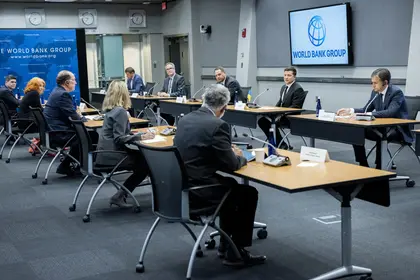The World Bank, together with the Ukrainian government and the European Union, will prepare a comprehensive “losses and needs assessment” of Ukraine by the end of summer, World Bank Regional Country Director for Eastern Europe Arup Banerji has said.
At this stage, direct physical damage is more than $100 billion. If you additionally take into account the economic losses suffered by companies and individuals due to the war, the losses will increase two or three times, he said in an interview with Interfax-Ukraine.
JOIN US ON TELEGRAM
Follow our coverage of the war on the @Kyivpost_official.
Banerji recalled that at the end of March, the World Bank estimated damage to infrastructure and facilities in Ukraine at about $60 billion, which almost coincided with estimates that are provided on an ongoing basis by the Kyiv School of Economics, using the World Bank methodology.
He noted that Ukraine currently needs huge resources on a monthly basis to keep the economy functioning during the war.
According to government estimates, with which the World Bank broadly agrees, the need for resources in general is about $5 billion per month (or $35 billion from now until the end of 2022). Obviously, obtaining sufficient resources is the most important task, but the cost of these resources also matters precisely because Ukraine will need to service these growing debts in the future, the World Bank representative said.
In this regard, he noted that the best way for partners to support Ukraine is through grants, and this is most notably done by the United States.
As it is not easy to get grants of sufficient size. The next best option is loans that provide fairly favorable conditions, with low interest rates and longer repayment periods, for example, from the World Bank and other IFIs. Some countries, such as the UK, the Netherlands, Sweden, Lithuania, Latvia and Denmark, have helped increase the volume of such cheap loans for Ukraine by providing guarantees to the World Bank and other international financial institutions, which is not a standard practice, Banerji said.
In general, he estimates that international partners have acknowledged the financial problems and allocated about $20 billion to finance assistance to Ukraine.
Despite these significant commitments, the timing of their repayment will, as before, be critical to meet the current needs of Ukraine, the World Bank regional director said.
Achieving the pre-war level of the economy, unfortunately, will not be quick or easy. Ukraine needs rapid economic growth – much more than the average of 3% per year that we saw in the pre-war era, he stressed.
An easy way to understand this is the “rule of 70:” to calculate the number of years it takes for a country to double its GDP, divide 70 by the annual growth rate, the World Bank representative said. Thus, with a growth of 3%, it will take Ukraine 22 years to double its economy. But if Ukraine can achieve stable growth at 7%, it will take only 10 years, Banerji said.
You can also highlight the text and press Ctrl + Enter



